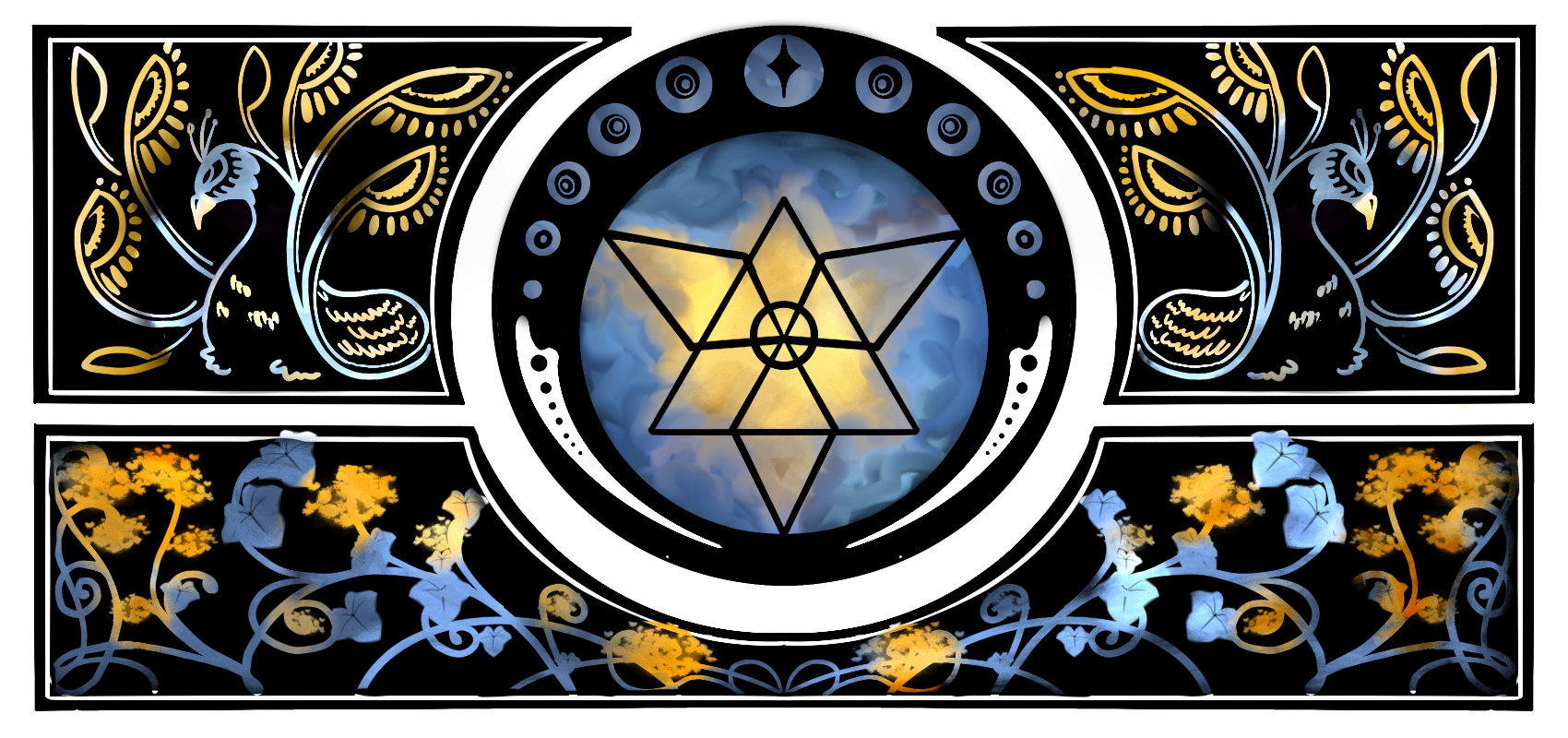Chimera D10 is a uses a gridless system that abstracts distance rather than exactly measure it. This means a couple of questions become necessary; namely "Where Am I?" and "Where is Everyone Else?"
Defining a Zone
To first determine this, the GM still must provide an area of space the
scene is taking place in--anything from an urban area to a forest area. The area a scene takes place in is refered to as the zone. A zone can be any shape or size and depends solely on what is best for the table and what the GM wants to do with the scene.
The GM may construct the zone as they please, placing the center of the conflict, defining the exits to the zone as defined by an edge; if the zone has more space, flanks are added to connect the edges to the heart. Typically, there can be as few as 2 zones (one center and one edge), but as many as 18 zones. For the sake of not dragging on any scene too long or cutting it too short, I recommend keeping it around 3 to 5 zones.
to GMs and Players, the configuration of a zone is important to the players as it helps them know what is connected and how to map out as area in their mind. With this in mind, it might help to identify edges and flanks by a direction "southeast flank" or even a narrative description "the tavern backdoor edge", or a combination of the two "center stage"
Zone Types
A meaningful way of telling zones apart are the effects a GM might pull from and impose depending on the environment they choose to set a zone in; there are 10 zone types: Urban, Magic, Mountain, Grassland, Underground, Underwater, Arctic, Arid, Swamp, Forest. A GM may choose to provide a map that uses one of these zone types or may instead choose to use labeled index cards to track where everyone is within this zone type. It is helpful to give the players a way to think about each individual zone
Each of these zone types might have specific zonal effects the GM uses to impose challenges or make the zones more interesting:
TBA
Urban
| Roll a 1d10 |
Zone Effect |
|---|
| 0-1 |
|
| 2-3 |
|
| 4-5 |
|
| 6-7 |
|
| 8-9 |
|
Magic
| Roll a 1d10 |
Zone Effect |
|---|
| 0-1 |
|
| 2-3 |
|
| 4-5 |
|
| 6-7 |
|
| 8-9 |
|
Mountain
| Roll a 1d10 |
Zone Effect |
|---|
| 0-1 |
|
| 2-3 |
|
| 4-5 |
|
| 6-7 |
|
| 8-9 |
|
Grassland
| Roll a 1d10 |
Zone Effect |
|---|
| 0-1 |
|
| 2-3 |
|
| 4-5 |
|
| 6-7 |
|
| 8-9 |
|
Underground
| Roll a 1d10 |
Zone Effect |
|---|
| 0-1 |
|
| 2-3 |
|
| 4-5 |
|
| 6-7 |
|
| 8-9 |
|
Underwater
| Roll a 1d10 |
Zone Effect |
|---|
| 0-1 |
|
| 2-3 |
|
| 4-5 |
|
| 6-7 |
|
| 8-9 |
|
Arctic
| Roll a 1d10 |
Zone Effect |
|---|
| 0-1 |
|
| 2-3 |
|
| 4-5 |
|
| 6-7 |
|
| 8-9 |
|
Arid
| Roll a 1d10 |
Zone Effect |
|---|
| 0-1 |
|
| 2-3 |
|
| 4-5 |
|
| 6-7 |
|
| 8-9 |
|
Swamp
| Roll a 1d10 |
Zone Effect |
|---|
| 0-1 |
|
| 2-3 |
|
| 4-5 |
|
| 6-7 |
|
| 8-9 |
|
Forest
| Roll a 1d10 |
Zone Effect |
|---|
| 0-1 |
|
| 2-3 |
|
| 4-5 |
|
| 6-7 |
|
| 8-9 |
|
Distance in a Zone
Within a zone and its parts, it can be hard for a player to determine where they are in the middle of all things. Let us imagine that Player A is in a zone--does not matter which kind. Player A has several allies in the zone with them and several enemies. Player A is
nearby to their allies and enemies because they are in the same zone. Player A could leave the zone, and then they would be
far away from their allies and the enemies. Player A could even be really selfish and leave the conflict altogether without telling their allies by stepping on an edge; outside a zone, Player A would be considered
distant, no longer in the zone, and probably an
asshole. If Player A was feeling heroic, they could jump in and try to help their allies fight the enemies; moving into melee range causes Player A to become
engaged; if Player A has a ranged weapon, they may not need to become
engaged with the enemy, but may instead stay
nearby or move
far away for the best hit.
So, in summation from closest to the enemy to farthest from the zone, there is engaged, nearby, far away, and distant. These distances are often made relative to a thing: engaged with an enemy, nearby in the same zone, far away from an adjacent zone, or distant and out of the zone completely. Keep this in mind when using these distances for communication.


Comments